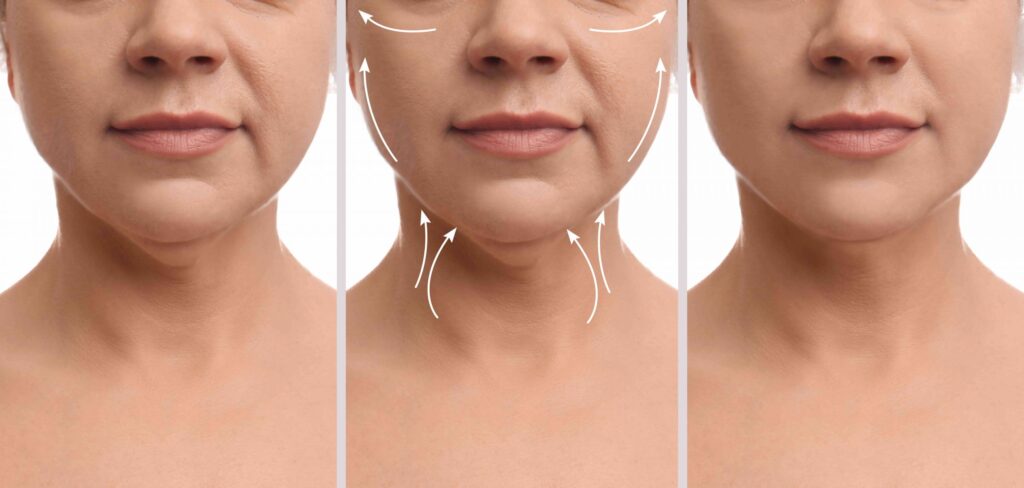Botox procedure, a minimally invasive treatment, has gained popularity for its ability to smooth wrinkles and rejuvenate the skin with minimal downtime. It involves injections that temporarily relax facial muscles, leading to a reduction in the appearance of lines and wrinkles. This procedure is not only sought after for cosmetic reasons but also for medical benefits such as treating excessive sweating and chronic migraines. Understanding the basics of Botox, from preparation to post-treatment care, can help demystify the process for those considering this aesthetic solution.
Overview of Botox: Uses and Effects
Muscle Paralysis
Botox works by temporarily paralyzing muscles. This is key in reducing the appearance of wrinkles, especially around the eyes and forehead. The paralysis occurs because Botox blocks signals from nerves to muscles.
The effects are not immediate. It takes about a week to see changes. These changes can last between 3-6 months. After that, the muscles regain their function, and wrinkles may reappear.
Medical Uses
Apart from cosmetic benefits, Botox has medical applications too. It helps in treating conditions like chronic migraines and excessive sweating. Doctors also use it for muscle spasms around the eyes.
For chronic migraines, patients receive injections every 12 weeks. This routine can significantly reduce headache days each month. In cases of excessive sweating, Botox targets sweat glands directly. The relief can be life-changing for many.
Follow-up Treatments
Follow-up treatments are necessary because the effects wear off after a few months. Patients typically schedule appointments every 4 to 6 months. This regularity ensures continuous results whether for cosmetic or medical reasons.
It’s important to consult with a professional before starting treatment. They will provide guidance on how often you should receive injections based on your individual needs.
Preparing for Botulinum Toxin Injections
Medical History
Discussing your medical history with the provider is crucial. It ensures the botox procedure is safe for you. Mention any conditions or medications to avoid complications.
Providers need to know about blood thinners and allergies. This helps them prepare for the injection sites properly. They might adjust the dilutional concentration of botox based on your needs.
Medication Adjustment
Stop taking blood-thinning medications a week before your appointment. This reduces bruising at injection sites.
Blood thinners include aspirin and certain supplements. Your doctor will give you a list of what to avoid. Staying hydrated is also important before undergoing the procedure.
Injection Preparation
Your provider will choose specific muscles in the upper face for injections. Knowledge of anatomy ensures accurate placement and avoids inadvertent injection into unintended areas.
The use of fine gauge needles minimizes discomfort during the procedure. The botox is mixed with normal saline to create a reconstituted mixture suitable for injection.
- Key steps before getting botulinum toxin injections:
- Discuss medical history.
- Stop blood-thinning medications.
- Stay hydrated.
- Important considerations:
- Inform about allergies.
- Understand which areas will be treated.
Preparing well can make your botox experience smoother and more effective, ensuring desired outcomes without unnecessary side effects.
Detailed Process of Administering a Botox Injection
Site Cleansing
Before administering the Botox injection, it’s crucial to cleanse the area. This step prevents infection. A healthcare professional uses an antiseptic solution.
Cleansing is simple but vital. It ensures the skin is free from bacteria.
Fine Needles
For minimal discomfort, fine needles are used. These needles are small in diameter, often referred to by their gauge size. The smaller the gauge, the finer the needle.
Using such needles reduces pain and anxiety for patients. It makes the procedure more bearable.
Injection Sites
The sites and doses vary depending on treatment goals. For example, adjusting eyebrow position requires precision in injecting near the eyebrows or lateral canthus.
- To lift drooping eyebrows, injections might be placed above and between them.
- Reducing crow’s feet involves targeting areas around the eyes, close to the orbital rim.
Each site has a specific dose requirement based on desired outcomes. Accurate dosing ensures effectiveness while minimizing risks.
Post-Botox Procedure Care and Instructions
Avoid Touching
After receiving a Botox injection, it’s crucial not to touch or massage the treated areas. This prevents spreading the product to unintended muscles.
Touching can lead to unwanted effects. It’s best to leave the area alone for 24 hours.
Stay Upright
Post-procedure, staying upright is essential. For at least four hours, avoid bending over or lying down.
This position helps Botox work where it should. Activities like reading or watching TV are okay.
Limit Activity
Strenuous activities should be avoided for 24 hours after your procedure. This includes:
- Heavy lifting
- Intense workouts
- Any activity that raises your heart rate significantly
Taking it easy helps prevent bruising and swelling. Light walks are fine but keep it gentle.
Following these instructions ensures better results from your Botox procedure. They help minimize side effects and maximize effectiveness. Remembering these steps contributes to a smoother recovery and more satisfying outcomes.
Risks and Safety Considerations of Botox Procedure
Temporary Effects
Temporary side effects are common after a botox procedure. Patients often experience bruising or swelling at the injection sites. These symptoms usually subside quickly.
It is important to follow post-procedure care instructions to minimize these effects. Applying ice can help reduce swelling and discomfort.
Serious Complications
Though rare, serious complications can occur. They include difficulty swallowing, speaking, or breathing. These signs should not be ignored.
If you notice any unusual side effects, contact your provider immediately. Prompt action can prevent further issues.
Safety Measures
Safety surveillance data shows that botox procedures are generally safe when performed by qualified professionals. However, understanding the potential risks is crucial.
Before undergoing treatment, discuss all possible contraindications with your provider. This ensures you’re a suitable candidate for botox.
- Key points to remember:
- Follow post-procedure instructions carefully.
- Report any unusual symptoms promptly.
- Ensure your provider has access to your full medical history.
Understanding the Results of Botox Treatment
Visible Outcomes
The outcomes of a botox procedure are not immediate. Most people see results within 1-2 weeks after treatment. This waiting period allows the botox to work on the muscles, gradually reducing lines and wrinkles.
Patients should have realistic expectations. Since everyone’s skin and muscle structure differ, so will their results from botox treatments. Some might notice changes sooner than others.
Individual Variability
Results vary based on several factors like muscle strength and the area treated. Stronger muscles in areas such as the forehead may require more time to show improvements compared to finer lines around the eyes.
Understanding this variability is key. It helps set realistic expectations for each individual undergoing botox procedures.
Maintenance Sessions
To maintain desired effects, regular sessions are necessary. The longevity of botox outcomes can differ greatly among individuals but typically lasts between 3 to 6 months.
After this period, muscles gradually regain movement, leading to the return of lines or wrinkles if not retreated. Planning for follow-up sessions is crucial for those seeking lasting results.
Purpose and Benefits of Botox Procedure
Cosmetic Enhancement
Botox is a popular cosmetic procedure. It aims to smooth wrinkles, giving the skin a more youthful appearance. Many choose it for its ability to reduce fine lines around the eyes and forehead.

This treatment offers quick results without surgery. Most people see improvements within days. The simplicity and effectiveness make it a top choice for cosmetic enhancement.
Medical Relief
Beyond cosmetics, Botox helps with certain medical conditions. It can relieve migraine symptoms, offering much-needed comfort to sufferers. This benefit highlights Botox’s versatility beyond just improving looks.
It also aids in managing excessive sweating and muscle spasms. These uses demonstrate how Botox serves both aesthetic and health purposes.
Quick Recovery
One major advantage of Botox is its minimal recovery time. Patients can resume their daily activities almost immediately after the procedure.
This convenience contrasts sharply with surgical options that require downtime for healing. For many, this makes Botox an attractive non-surgical alternative.
Selecting a Qualified Healthcare Provider for Botox Treatment
Certification Check
When looking for a health care provider to administer Botox, it’s crucial to check their certification. This ensures they have the proper training and knowledge. A certified practitioner is more likely to understand the intricacies of facial anatomy. They can accurately target treatment areas without causing harm.
Certification also indicates that the provider has undergone specific training in administering Botox injections. This minimizes risks such as facial asymmetry or unwanted effects on facial expressions.
Realistic Expectations
It’s important to choose a provider who discusses both potential outcomes and risks openly. An honest discussion helps set realistic expectations for patients seeking facial rejuvenation through Botox. Providers should explain how Botox can smooth out wrinkles but might not eliminate all signs of aging completely.
A good doctor will also talk about any discomfort associated with the procedure, like minor pain at the needle entry points on the face. They ensure patients are well-informed before proceeding with treatment.
Reviews and Recommendations
Looking at reviews or getting recommendations is another way to find a reputable clinic or plastic surgery center for your botox needs:
- Positive online reviews often reflect successful treatments and satisfied patients.
- Personal recommendations from friends or family members add an extra layer of trustworthiness.
These insights provide valuable information about patient experiences, which can help you make an informed decision when selecting your botox provider.
Closing Thoughts
The journey through understanding Botox, from its uses and effects, preparation, the detailed procedure, to post-care and safety considerations, underscores its significance in aesthetic and therapeutic treatments. Highlighting the importance of selecting a qualified healthcare provider emphasizes the procedure’s safety and effectiveness. The collective insights into the benefits and purpose of Botox treatments further illuminate its role in enhancing personal confidence and well-being. It is crucial for individuals considering Botox to weigh the risks against the potential benefits, armed with comprehensive knowledge from reputable sources.
With the plethora of information available, making an informed decision about undergoing a Botox procedure requires careful consideration and consultation with a medical professional. Those interested should seek out qualified providers who adhere to the highest standards of care. Let this be your guide to exploring the possibilities that Botox offers for aesthetic enhancement and medical treatment. Take the next step towards achieving your desired outcomes by consulting with a healthcare professional today.
Frequently Asked Questions
What is Botox and what are its primary uses?
Botox, or Botulinum toxin, is a neurotoxic protein used medically to treat certain muscular conditions and cosmetically to remove wrinkles by temporarily paralyzing muscles.
How should one prepare for a Botox injection procedure?
Prior preparation includes consulting with your healthcare provider to discuss any medications you’re taking that could affect the procedure, avoiding alcohol for at least a week before treatment, and stopping anti-inflammatory drugs two weeks prior to avoid bruising.
What does the process of administering a Botox injection entail?
The process involves cleansing the area, possibly applying a topical anesthetic if necessary, and then injecting small amounts of Botulinum toxin into specific muscles with a fine needle. The number of injections depends on many factors including the extent of the area being treated.
What are some post-procedure care instructions following a Botox treatment?
Avoid rubbing or massaging the treated areas for 24 hours to prevent spreading the toxin. It’s also recommended to stay upright for several hours post-injection and avoid strenuous physical activity until the next day.
Can you outline some risks associated with Botox procedures?
Risks can include pain at the injection site, infection, inflammation, swelling, redness, bleeding and bruising. In rare cases, effects may spread away from the injection site causing symptoms like muscle weakness or trouble breathing.
When can one typically see results from their Botox treatment?
Results usually become noticeable within 24 to 48 hours after receiving botox injections but it might take up to two weeks for full effects. These results generally last between three to six months.
Why is selecting a qualified healthcare provider important for Botox treatments?
Choosing an experienced healthcare provider ensures they have comprehensive knowledge in facial anatomy which is crucial for safely administering injections and achieving optimal results while minimizing risks.











